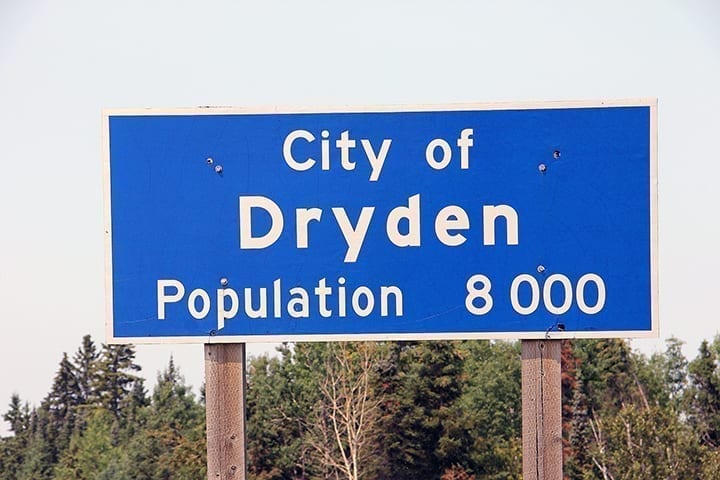 You see strange things driving across Canada.
You see strange things driving across Canada.
Near the top of the list of strangeness are signs informing motorists they are entering Dryden, a community in northwest Ontario. The signs proclaim: 'City of Dryden Population 8000'.
A city of 8,000 people? That can't be right, can it?
Our first thought was that perhaps a number was missing from the signs. Maybe there should be an extra '8' to bring the population up to a more city-like 88,000. But no, 8,000 is about the population of Dryden. Although 8,000 might be slightly optimistic. The 2016 census put its population at an even less city-like 7,749.
Now we have no particular interest in the population of Dryden or what its good citizens claim it to be.
Our interest is really the second thought we had when we saw the sign placing the word 'city' and '8000' in close proximity. That thought was maybe Hay River should claim city status in the NWT.
It would certainly be no less strange than Dryden being called a city in Ontario. After all, that is the province with honest to goodness cities like Toronto, Ottawa, Hamilton, Mississauga, London, Windsor and others. Ontario actually has 52 cities, with Dryden being the smallest by population.
There is no population threshold for an Ontario community to be called a city. However, a town can often be declared a city if it is a significant community in a region.
In the NWT with a population of 44,000 or so – not even a sell-out at a Blue Jays game in Toronto – there is even more logic to smaller communities being able to obtain city status. After all, Yellowknife – the lone 'city' in the NWT with around 20,000 people – does not have a population normally associated with a city.

Paul Bickford/NNSL photo
Hay River has 3,800 people. Of course, that is even less than the metropolis of Dryden, but proportionately it is much closer in population to Yellowknife than Dryden is to Toronto with its 2.7 million people.
We see no mention of population thresholds for towns to become cities in the NWT's Cities, Towns and Villages Act. (And it is noteworthy that the act's title contains the plural word 'Cities'.)
Hay River may also see growth in the next few years if some development projects in the area come to fruition. If the town's population increases to, say, 5,000, the argument becomes stronger that we should become the NWT's second city. (Of course, we never before heard the argument for city status until we just made it, but that's beside the point.)
There is also no doubt that Hay River is the major community in the South Slave, which would be one of the arguments for city status in Ontario.
Hay River even has a highrise. A troubled highrise, but a highrise nonetheless. That should help bolster any claim for city status.
We didn't see a highrise driving through Dryden, unless you count the towers of a pulp mill.
If Dryden can be considered a city, Hay River can certainly be one, too.